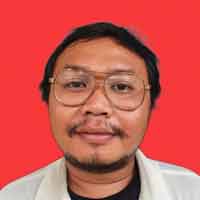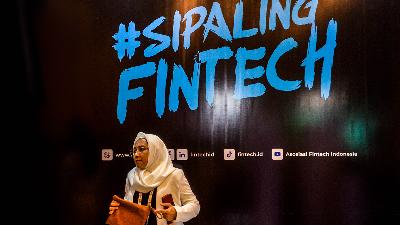Sea Sasi Planning in Negeri Kailolo
Monday, December 2, 2024
The people of Kailolo draft regulations for the enforcement of marine sasi, aimed at improving coral reefs in their area.
arsip tempo : 174492917737.

AROUND 20 people gathered at the Negeri (village) Kailolo authority office in the Pulau Haruku subdistrict, Central Maluku, staring intently at the projector screen on the wall of the building. That morning on Thursday, November 14, 2024, Muhammad Saleh Suat, a law lecturer at the State Islamic Institute (IAIN) of Ambon, presented each of the draft participatory regulations for managing coastal and marine areas based on indigenous peoples’ wisdom.
The drafting of these regulations was initiated by the government of Negeri Kailolo in collaboration with Jala Ina, an organization focusing on coastal and marine issues in Maluku. Present at the meeting were representatives from the saniri (customary council), religious leaders, and Negeri Kailolo residents who mostly work as fishermen. One of the points in the draft regulations was sasi, a local wisdom that refers to a ban on harvesting certain natural resources in an effort to preserve the environment.
Negeri Kailolo had implemented marine sasi in the 2000s. However, it lasted only a year. “Until today, sasi is no longer in effect. Perhaps because it wasn’t supported by a formal regulation,” said Muksim Marasabessy, Secretary of Negeri Kailolo. Muksim attended the meeting representing the local government.
One of the discussions in the draft regulations mentioned that the sasi enforcement would be carried out through a deliberation of the indigenous community, led by each customary institution’s leader. Additionally, it outlined the locations that must be marked with prohibition signs. “(The sasi markers) are in the form of wooden posts and buoys or coconut fronds and buoys,” said Saleh, 55, while reading Article 24 of the draft regulations.
The initiative to revive the sasi tradition arose after the community became concerned about the condition of the coral reefs in Negeri Kailolo. This marine ecosystem had been severely damaged due to reckless fishing practices. One of the harmful fishing practices commonly occurring in the coastal and marine areas of Negeri Kailolo is the use of bombs to catch fish.
Another destructive practice involves the use of trawl nets that reach the seabed. The nets are then dragged along the sea floor, destroying fragile coral reefs. This situation was further exacerbated by the lack of enforcement of marine sasi in Negeri Kailolo. “The condition is devastating. Most of it is due to bomb fishing,” said Saleh.
Jala Ina Executive Director Muhammad Yusuf Sangadji explained that the initiative to draft these regulations began with discussions between Jala Ina and the government of Negeri Kailolo. It was discovered that the community of Negeri Kailolo already had experience and traditions in protecting their marine ecosystem.
This practice was then linked to positive law and formalized through a regulation. “So there was mutual agreement and understanding between Jala Ina and the government of Negeri Kailolo to jointly initiate this village regulation,” said Yusuf.
In preparing the draft, Jala Ina conducted several studies. First, they examined the condition of coral coverage in the waters of Negeri Kailolo. The study revealed that coral coverage at depths of 4 to 12 meters had been completely damaged. Jala Ina researchers confirmed from several local residents that bomb fishing was indeed taking place.

Discussion of the draft regulation for sea sasi implementation in Negeri Kailolo, November 14, 2024. TEMPO/Yosea Arga
Another study focused on the social, economic, and cultural conditions. The goal was to understand the history, origins of the village, and the relationship between the people of Negeri Kailolo and their natural environment. Before finalizing the draft regulation, the researchers held in-depth discussions with the local community to share the findings of their research. In these discussions, the community voiced their opinions and suggestions for the draft regulations.
The draft regulation formulated by the government of Negeri Kailolo in collaboration with Jala Ina is not final yet. Yusuf said that it will be returned to the community for internal review. With the regulation in place, Yusuf hopes that sasi can be re-enforced. “The values embedded in sasi are very strong. The compliance level is very high,” said the man who graduated from the Faculty of Fisheries and Marine Science at Pattimura University in Ambon, Maluku.
The residents apparently have the same hope. They want the sasi at sea to resume once the local regulation goes into effect. Muksim still clearly remembers when the sasi was enforced for one year in his hometown. At that time, thanks to the sasi, the destructive practices of catching fish and marine biota really stopped because the residents followed that customary regulation. "We have coral that must be protected," he said.
The community shares the same hope. They want the marine sasi to be fully enforced once the regulation is passed. Muksim clearly remembers when sasi was implemented for a year in his hometown. At that time, due to sasi, destructive fishing practices truly stopped because the community adhered to the customary law. “We must protect our coral,” he said.











